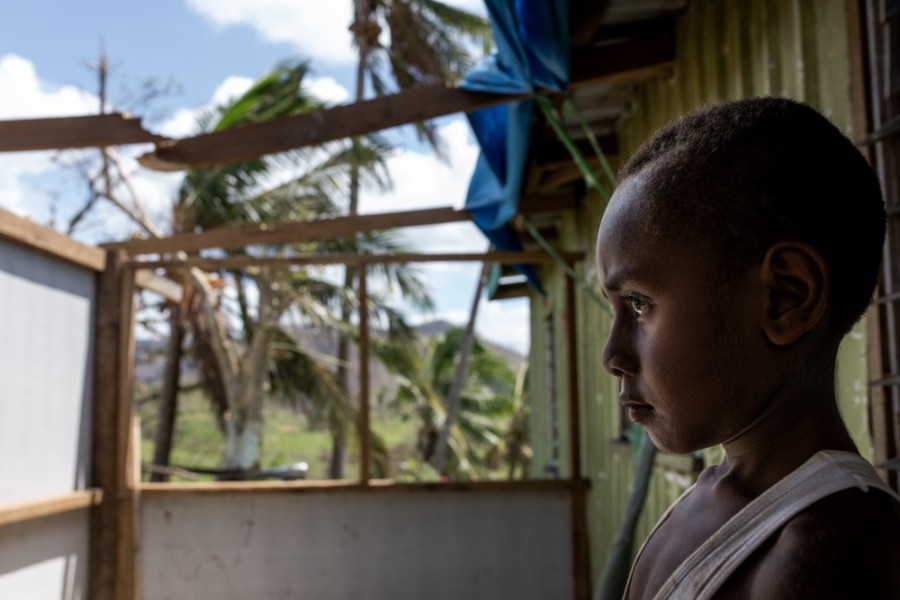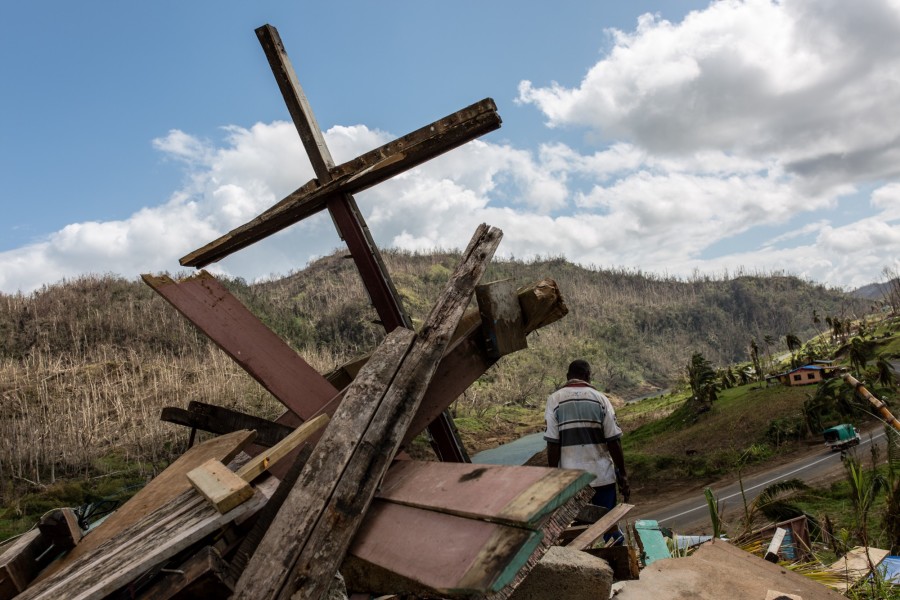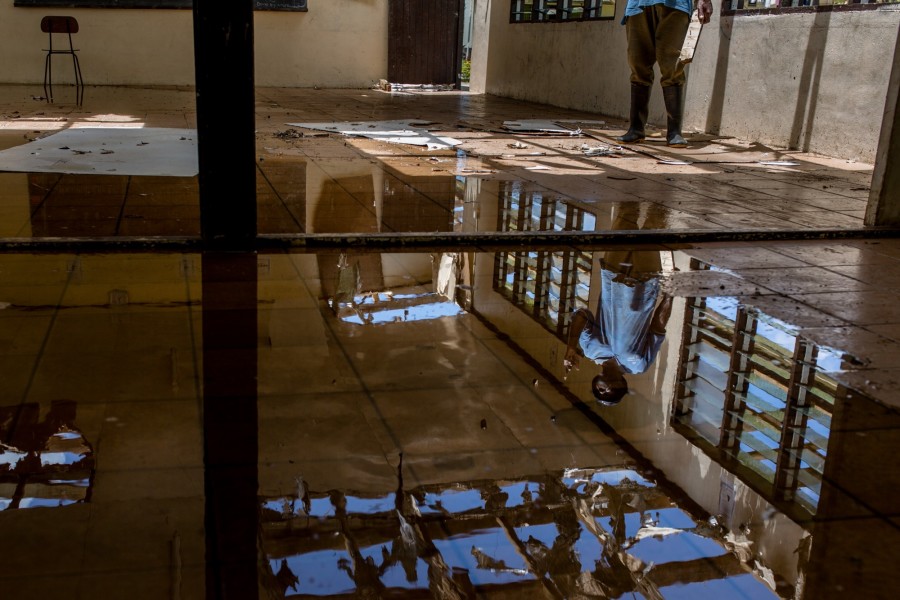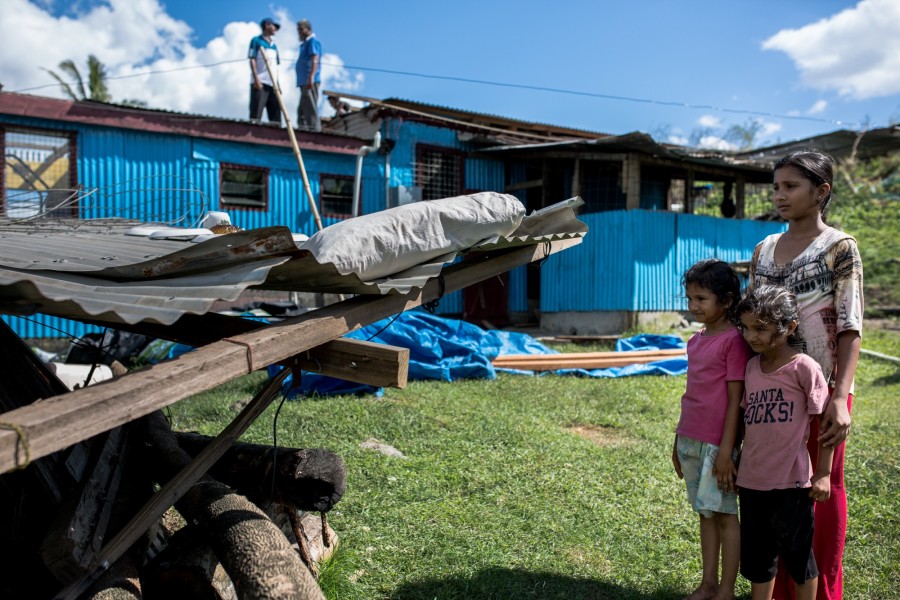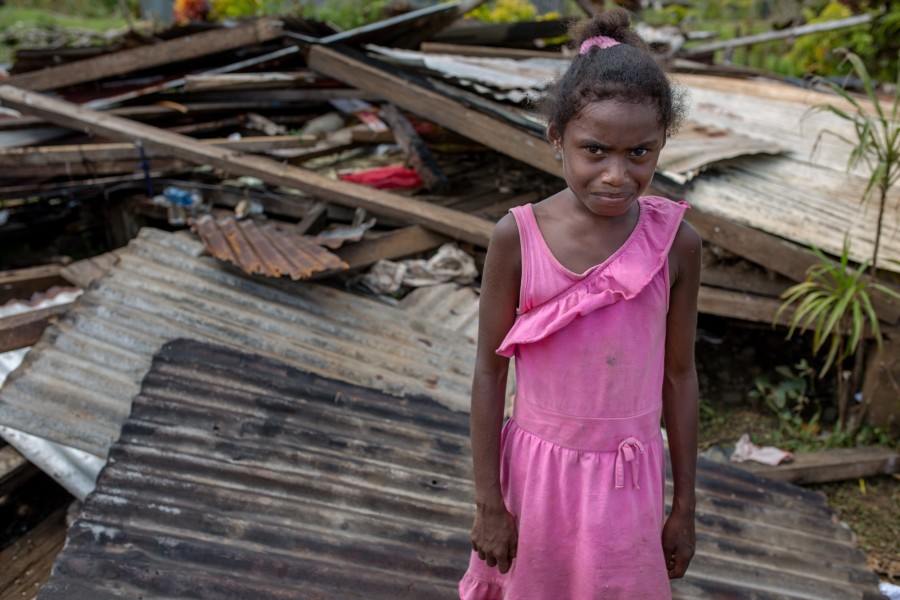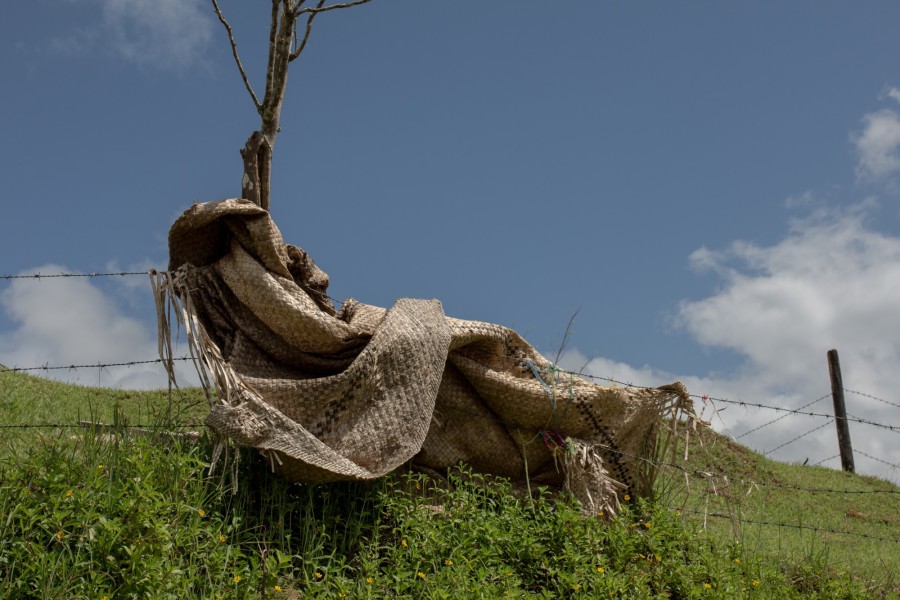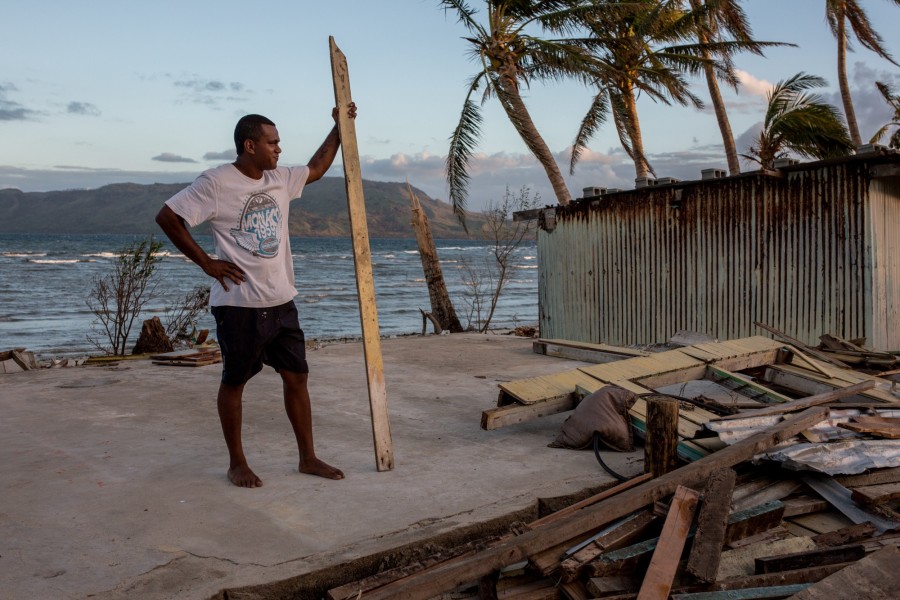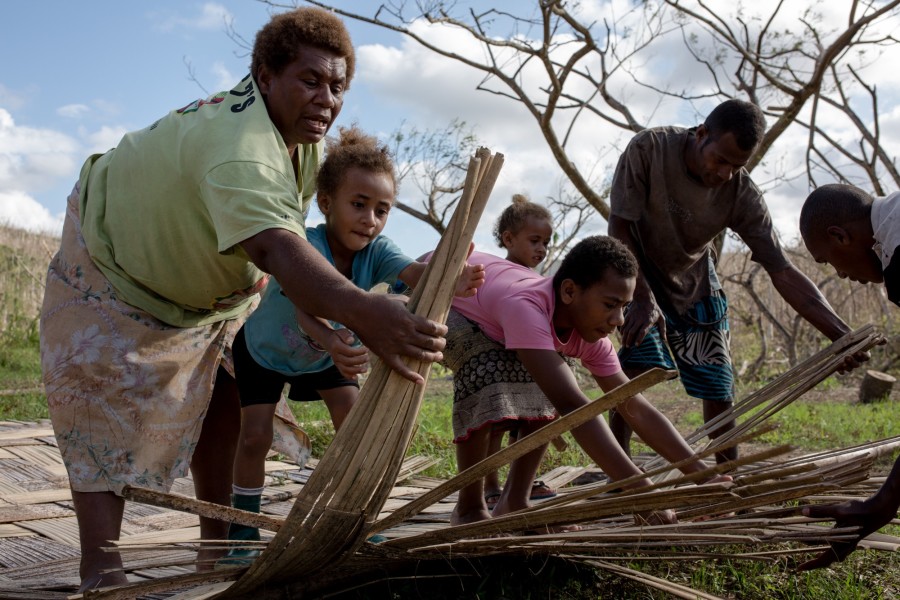I find myself walking through familiar scenes, scenes of utter devastation, trees with no leaves, corrugated iron that once were people’s rooves twisted and folded around trees, scattered, wet clothes amongst the remnants of homes. These scenes are somewhat less sad when you are greeted with warm Fijian smiles and greetings, “Bula” they say welcomingly “thank you for visiting us”, amongst the background noise of hammering and the sounds of villages rebuilding.
On the 20 February 2016, Category 5 Cyclone Winston struck the islands of Fiji, it was the strongest tropical cyclone to make landfall, taking the lives of 44 people and destroying 55,000 homes and directly impacting 350,000 people, over a third of the population.
It has been nearly one year since Category 5 Cyclone Pam hit Vanuatu, with its record breaking intensity. People of the pacific are resilient to the extremes of tropical weather. However, elders from both of these countries recount how these recent cyclones were the most powerful they have experienced, from the roaring of the winds (up to 300km/h), to the devastation of whole villages, to the sheer terror as people fled their collapsing homes, running out to seek shelter and not being able to see more than a few metres in front of them.
As our climate changes, cyclones can become more intense as the oceans warm, as there is more energy that can be converted to wind speed. The damage caused by these extreme weather events are further exacerbated by the sea level rise on already vulnerable low lying villages through storm surges.
- Mereoni Raralevu, 5 in his house that was damaged by Cyclone Winston. The house next door collapsed and killed a 24 year old man who was assisting people to get out. The village hailed him as a fallen hero. Nasaibitu village, Fiji. Photo: Jeff Tan
- Debris. Naveiveiwali village, Fiji. Photo: Jeff Tan
- Sainimere, 6 and Alumeci Cokanansiga, 3, in their damaged home. Gusuniwai Village, Fiji. Photo: Jeff Tan
- Asivorosi Tarakinikini suffered multiple injuries to his hand, head and back when his house was blown down the hill by Cyclone Winston. Nasaibitu village, Fiji. Photo: Jeff Tan
- Kong, 6 and Luki, 5 in the remnants of Luki’s house. Naveiveiwali village, Fiji. Photo: Jeff Tan
- Sikeli K. Isilaba, chairperson of Nahala High School inspects the damage wrought by Cyclone Winston. He has rounded up alumni from the school from the surrounding villages to repair the school buildings. Wanubuku Village, Fiji. Photo: Jeff Tan
- Sera Nabovulau, 24 with her 7 month old daughter in what remains of her house. They had to flee to underneath the community hall to shelter from Cyclone Winson. Naveiveiwali village, Fiji. Photo: Jeff Tan
- Akanisi Naibose, 36 with her children Merewlesi, 1 and Elima, 9 in the ruins of their home. In the background, the village has worked to rebuild their neighbour’s house so that villagers can shelter in there. Naveiveiwali village, Fiji. Photo: Jeff Tan
- Anisha, 9, Zaina, 6, and Umaiza Ali, 5 stand by their house which had the roof ripped off by Cyclone Winston. Their extended family assist in repairing the roof. Korouto Village, Fiji. Photo: Jeff Tan
- Tokasa Lasage, 10, in front of the remains of her family home. Nasaibitu village, Fiji. Photo: Jeff Tan
- A Fijian woven mat damaged by Cyclone Winston, Nasaibitu village, Fiji. The Fijian woven mat is commonplace in all Fijian homes whether used as rugs or for sleeping on or for gatherings on the grass. The mats are also traditionally given at special occasions or during the visits of important people. Photo: Jeff Tan
- Peni Cama contemplates rebuilding his house after it was destroyed by Cyclone Winston. Cama tells how tidal waves surged through the village and he had to flee with his wife up the hill to his grandfather’s house. Vatukoula village, Fiji. Photo: Jeff Tan
- The Cokanansiga family work together to interweave the slats that serve as their house floor and wall. Gusuniwai Village, Fiji. Photo: Jeff Tan
- Alosi Vhavathiti, 4, helps to repair his house. Nasaibitu village, Fiji. Photo: Jeff Tan

